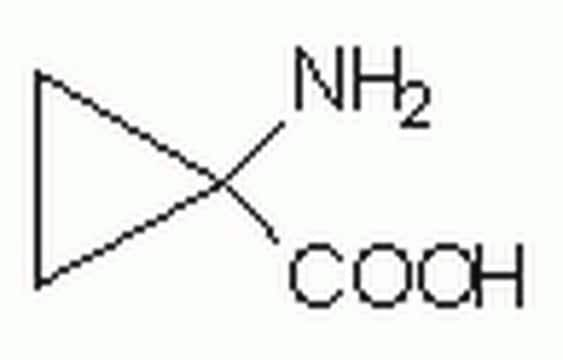M2383
α-(Methylamino)isobutyric acid
≥97% (titration)
Synonym(s):
2,N-Dimethylalanine, 2-(Methylamino)-2-methylpropionic acid
About This Item
Recommended Products
Assay
≥97% (titration)
form
powder
technique(s)
ligand binding assay: suitable
color
white
mp
>300 °C (lit.)
storage temp.
−20°C
SMILES string
CNC(C)(C)C(O)=O
InChI
1S/C5H11NO2/c1-5(2,6-3)4(7)8/h6H,1-3H3,(H,7,8)
InChI key
DLAMVQGYEVKIRE-UHFFFAOYSA-N
Looking for similar products? Visit Product Comparison Guide
Related Categories
Application
- as a system A transport system inhibitor to perform inhibition experiments
- as a system A transport system inhibitor to study its effect on the generation of epileptiform field potentials (EFPs) in the acutely disinhibited cortical slices
- as an N-acetyltransferase (SNAT) inhibitor in Hank′s balanced salt solution (HBSS) to study its influence on the uptake of 14C-cysteine/ radioactive-labeled cysteine
Biochem/physiol Actions
Signal Word
Warning
Hazard Statements
Precautionary Statements
Hazard Classifications
Eye Irrit. 2
Storage Class Code
11 - Combustible Solids
WGK
WGK 3
Flash Point(F)
Not applicable
Flash Point(C)
Not applicable
Personal Protective Equipment
Regulatory Listings
Regulatory Listings are mainly provided for chemical products. Only limited information can be provided here for non-chemical products. No entry means none of the components are listed. It is the user’s obligation to ensure the safe and legal use of the product.
JAN Code
M2383-5G:
M2383-BULK:
M2383-1G:
M2383-100MG:
M2383-250MG:
M2383-VAR:
Certificates of Analysis (COA)
Search for Certificates of Analysis (COA) by entering the products Lot/Batch Number. Lot and Batch Numbers can be found on a product’s label following the words ‘Lot’ or ‘Batch’.
Already Own This Product?
Find documentation for the products that you have recently purchased in the Document Library.
Our team of scientists has experience in all areas of research including Life Science, Material Science, Chemical Synthesis, Chromatography, Analytical and many others.
Contact Technical Service









